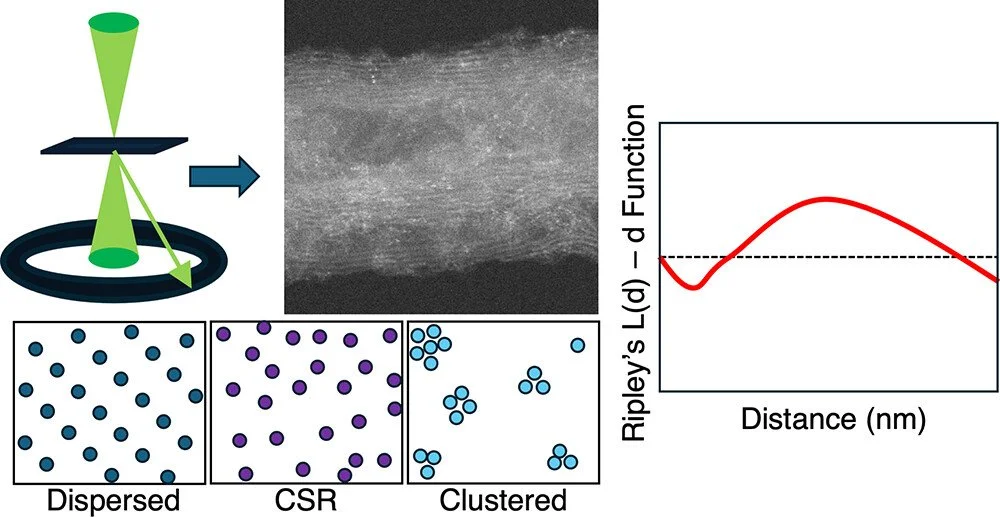Quantitative Imaging of Cobalt Phthalocyanine Distribution on Carbon Nanotubes: A Deep Learning Approach to Catalyst Characterization
Electrochemical reduction of carbon dioxide (CO₂) offers a pathway to valuable products, with catalysts playing a crucial role. This study investigates the distribution of cobalt tetraaminophthalocyanine (CoPc-NH₂) immobilized on carbon nanotubes (CNTs), utilizing high-angle annular dark-field scanning transmission electron microscopy (HAADF-STEM) to characterize CoPc-NH₂ distribution. A challenge in the quantitative HAADF-STEM analysis is the introduction of bias from manual Co atom identification. To address this, we developed and trained a convolutional neural network (CNN) using a data set generated from images of CoPc-NH₂/CNT samples with varying Co loadings. The CNN, implemented in TensorFlow and Keras, facilitated Co atom detections. Analysis of the CNN-generated data confirmed a correlation between Co loading and surface density, consistent with findings from UV–vis spectroscopy. Furthermore, the application of Ripley’s L(d) function highlighted the presence of slight Co atom clustering. This work demonstrates the utility of the combined HAADF-STEM and CNN approach for providing spatially resolved information about catalyst distribution on nonplanar supports, revealing structural details that are typically lost through other characterization methods.
Ortega Ortiz, E. V.; Yang, J.; Wang, H.; Stach, E. Quantitative Imaging of Cobalt Phthalocyanine Distribution on Carbon Nanotubes: A Deep Learning Approach to Catalyst Characterization, J. Phys. Chem. Lett., 2025, 129 (47), 20889-20896. https://doi.org/10.1021/acs.jpcc.5c04916

